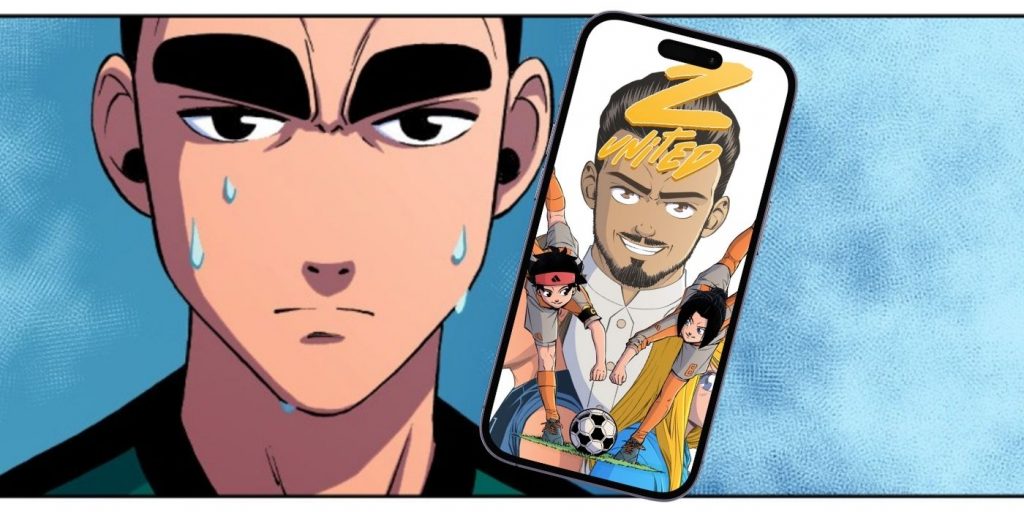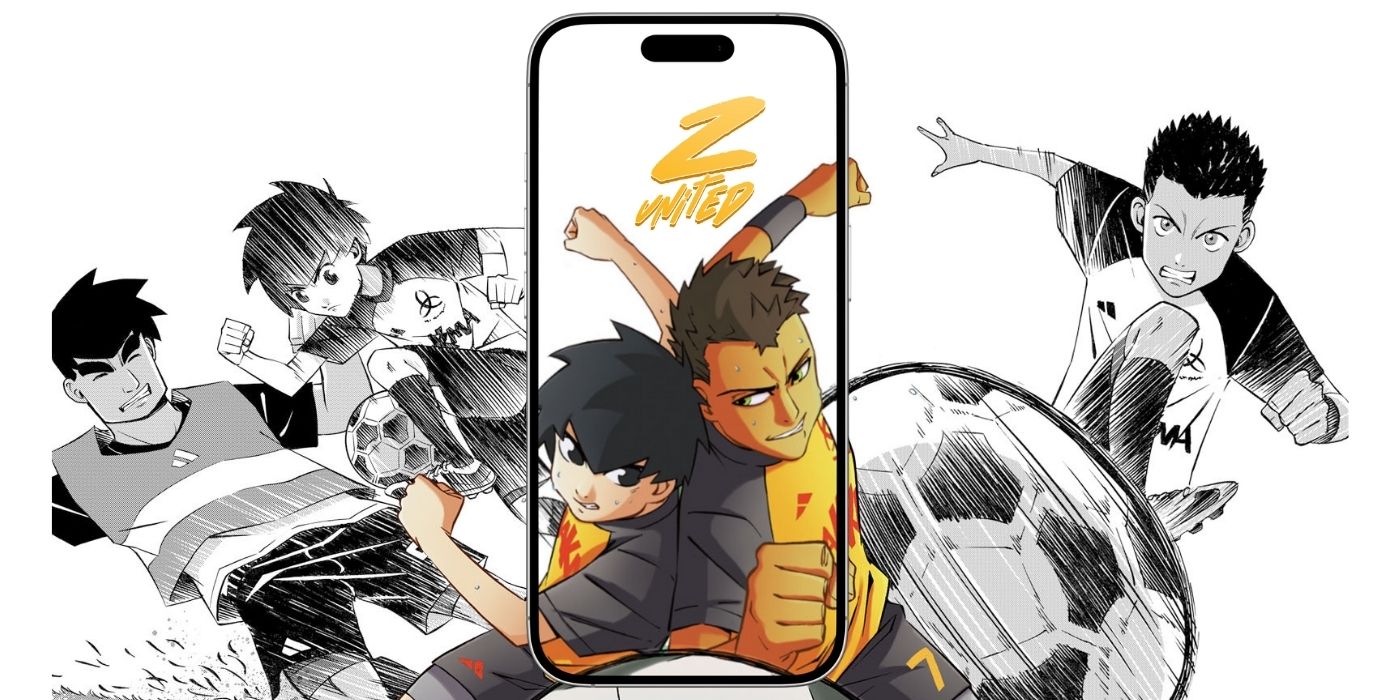If printoonization turns webtoons into books, webtoonization is the reverse process: adapting a traditional comic, like manga, into a vertical digital format designed for smartphones. This transformation requires much more than slicing pages into thin strips. It’s a complete editorial rethink. And that’s exactly what we did with Z United.
Originally published as a manga series in three volumes, Z United has now become a full-fledged webtoon. The first season, available on major platforms, is not just a digital copy of the books. It’s a real webtoonization: the storytelling has been restructured for scrolling, the pacing reworked for digital rhythm, and the artwork reformatted panel by panel to fit the mobile-first experience.
The original manga was written by Edmond Tourriol and Daniel Fernandes, with art by Albert Carreres. The team crafted a fast-paced sports story with dynamic action, humor, and a strong cast of characters. When adapting Z United for the webtoon format, we preserved that same energy while embracing the unique possibilities of vertical storytelling, like cliffhangers, visual transitions, and cinematic scrolling effects.
Webtoonization means more than format change. It’s about adapting the reading experience to the way people consume content today: on their phones, on the go, in short bursts. That’s why each episode of the Z United webtoon is designed to be engaging, accessible, and self-contained, while still building toward the larger story arc that made the original manga a success.

By webtoonizing Z United, we’ve given the series a new dimension. The story lives on in a fresh format, reaching new readers worldwide. And for the original fans, it’s a new way to experience a universe they already love, with a new tempo, new layouts, and the same passion behind every panel.

